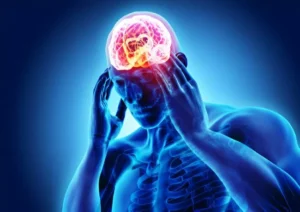Excedrin Migraine vs Tension Headache:
Relief Differences and Best Treatments
Understanding Excedrin for Migraine and Tension Headache Relief
Headaches can really knock you down whether it’s a migraine or a tension headache.
Excedrin is one of those popular over-the-counter meds that many folks turn to for relief but is it the right pick for your headache type?
In this article, we’re gonna dig into the differences between Excedrin Migraine and Excedrin Tension Headache how they work
and which one might be the best for you.
What Is Excedrin?
Excedrin is a line of pain relievers that combines different active ingredients to tackle various types of headaches. The two main types are:
- Excedrin Migraine
- Excedrin Tension Headache
Both have a mix of acetaminophen aspirin and caffeine but are set up a bit differently to match the headache they target.
Excedrin Migraine: How It Works
What Is a Migraine?
Migraines are those intense headaches that often come with nausea sensitivity to light and sharp pain usually hitting one side of the head.
How Excedrin Migraine Helps
Excedrin Migraine includes:
- Acetaminophen (250mg) – it helps ease pain.
- Aspirin (250mg) – it cuts down on inflammation.
- Caffeine (65mg) – it boosts absorption and tightens blood vessels.
This combo helps stop pain signals reduces inflammation and improves blood flow making it a solid choice for migraine relief.
When to Take Excedrin Migraine
- At the first sign of a migraine.
- For moderate to severe migraine pain.
- When other pain relievers aren’t cutting it.
Note: Don’t go over the recommended dose to avoid rebound headaches.
Excedrin Tension Headache: How It Works
What Is a Tension Headache?
Tension headaches bring on mild to moderate pain often felt like a tight band around your head.
Stress bad posture and lack of sleep are common triggers.
How Excedrin Tension Headache Helps
Excedrin Tension Headache has the same active ingredients as Excedrin Migraine but in slightly different amounts:
- Acetaminophen (500mg) – packs a stronger pain relief punch.
- Caffeine (65mg) – makes it work better.
It’s designed for general tension headaches not migraines.
When to Take Excedrin Tension Headache
- For stress-related headaches.
- When you feel dull and constant pain (not throbbing).
- If migraines aren’t the issue.
Key Differences: Excedrin Migraine vs Tension Headache
| Feature | Excedrin Migraine | Excedrin Tension Headache |
|---|---|---|
| Best For | Severe, throbbing migraines | Mild to moderate tension headaches |
| Acetaminophen | 250mg | 500mg |
| Aspirin | 250mg | None |
| Caffeine | 65mg | 65mg |
| Pain Type | Pulsating, one-sided | Dull, band-like pressure |
Which One Should You Choose?
- Choose Excedrin Migraine if you have:
- Throbbing pain
- Nausea or light sensitivity
- One-sided headaches
- Choose Excedrin Tension Headache if you have:
- Steady squeezing pain
- Stress-related headaches
- No migraine symptoms
Side Effects and Precautions

While Excedrin is mostly safe you might come across some side effects:
- Upset stomach (thanks to aspirin)
- Nervousness (from caffeine)
- Rebound headaches (if you overdo it)
Who Should Avoid Excedrin?
- People with ulcers or bleeding disorders (due to aspirin).
- Those sensitive to caffeine.
- Expectant mothers ought to consult a doctor beforehand.
Natural Alternatives to Excedrin
If you want to steer clear of meds you could try:
- Hydration (being dehydrated can cause headaches).
- Cold compress (great for migraines).
- Peppermint oil (works wonders for tension headaches).
- Stress management (think yoga or meditation).
Final Thoughts: Is Excedrin Right for You?
Excedrin can really help with migraines and tension headaches but picking the right type is super important.
Always stick to the dosage instructions and if headaches keep coming back it’s a good idea to check in with a doctor.
Have you tried Excedrin? We’d love to hear your experience in the comments.
HOSTINGER HOSTING PLAN DISCOUNT CODE


Hi there to all, how is everything, I think every one is getting more from this web page, and
your views are nice designed for new users.